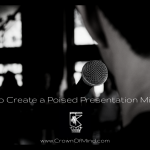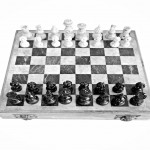All students need a resource pack.
When you start school, one of the first experiences you’ll have is going to pick up your books. If you’re with parents, they might buy you pens, pencils, notebooks. Your school provides you with textbooks. If you’re in college, you just might receive the book selection in the course syllabus and you have to go out to find them. In each scenario, there’s that time when you have to collect your necessary items to be successful in your classes.
Taking your education into your own hands, it’ll also be necessary for you to assemble your personal resource pack.
What should it include?
An idea pad: this is different from your standard notebook or loose paper. The idea pad can be small. Carry it with you wherever you go and use it as a channel to write down your thoughts. Let the technology [the phone, iPad, tablets] be the backup. There’s nothing like taking the pen to the paper and transferring your thoughts through the hand. Your memory for the content is sharper. You take your ideas to a deeper level by writing them down.
Library: when you think of a library, you might imagine a large building housing thousands of books organized by the Dewey Decimal System. Librarians and computers and silence. People reading. No drinks. But you can create your own library and customize it, making it portable. Research books, articles, magazines and any material pertaining to your craft. Buy a bookshelf and start stacking. Create a Dropbox account and upload your saved documents for access while traveling. Collect USB drives or an external hard drive and save those valuable articles you might need in the future for learning or making a point. Your “library” doesn’t have to sit in an enormous building.
Paper: A journal or loose paper, you’ll need places to write down your thoughts in more detail. While the idea pad is for capturing inspirations, your writing books are meant for elaboration.
USB/Hard Drives: Without having to point out the obvious need for a computer with this one, you’ll need disks to save your valuable information on. Buy a USB drive and a hard drive. One is smaller, useful for travel while the other is bulkier, kept safe and harboring everything. Organize your files by folder type and begin uploading.
Watch: Whether on your phone or your wrist, it’ll be important to maintain your time management with a device that can check you when needed. Use the alarm functions to set out designated times to complete work, move to another or simply stay focused.
Of course there are more items you could add to this brief list. But maintaining just these resources with help you become a more efficient learner.






